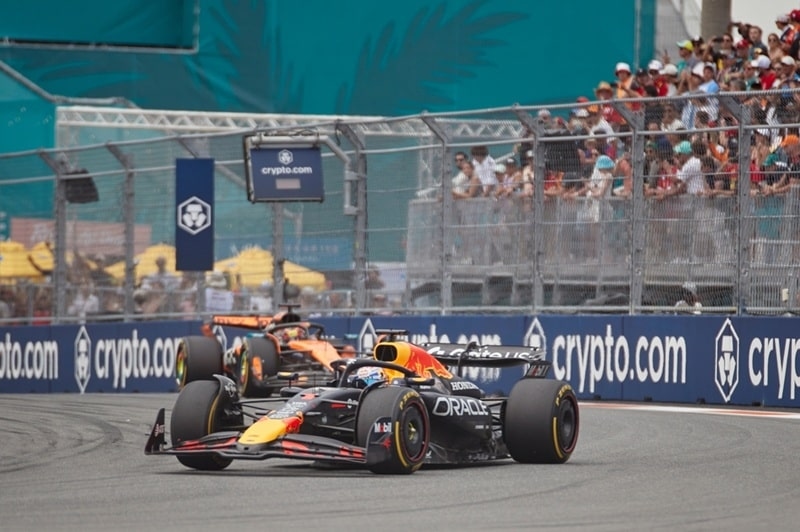Formula 1 Teams Financial Strategies: Beyond The Finish Line

Formula 1 stands out as an exceptionally costly endeavor, involving multi-million-dollar investments in research and development aimed at crafting the swiftest car on the racing grid. Nevertheless, the substantial expenditures do not necessarily translate into massive profits for teams, as a significant portion of their earnings is typically directed towards the development of the upcoming year's car and meeting payroll obligations.
Teams Have Different Sources of Income
Formula 1 teams source their finances from four distinct channels: sponsorships, financial disbursements from the sport itself, contributions from drivers, and support from manufacturers. The primary revenue stream for teams is sponsorship deals, with numerous sponsors contributing millions of dollars. As an illustration, Mercedes receives approximately $75 million annually from Petronas, while Red Bull has entered into a lucrative five-year sponsorship agreement valued at $500 million with Oracle. Successful teams leverage their on-track performance, global fan base, and media coverage to attract new sponsors. In return, sponsors receive exposure to a massive audience, creating a symbiotic relationship. Securing long-term partnerships provides stability to teams, allowing them to plan for the future with confidence.
The second most lucrative avenue for teams to generate income involves active participation in the sport and achieving commendable results. Formula 1 accumulates funds from diverse sponsorships and television rights, forming a prize pool. At the conclusion of each season, teams receive a portion of this pool based on their current and historical performances in the competition.
Drivers and Manufacturers Also Shell Out Money
The third revenue stream for teams comes from "pay-to-play" drivers. Presently, Lance Stroll stands as the sole exemplification of a "pay-to-play" driver on the grid, given that his father, Lawrence Stroll, is the owner of the Aston Martin F1 team. In the past, Nicholas Latifi served as a driver for Williams and also financially contributed to the team through sponsorships from Sofina and Lavazza. Another source of income stems from various automotive manufacturers. Entities such as Mercedes, Ferrari, McLaren Alpine, and others invest in their Formula 1 teams to provide financial support. Exceptional performance by a team tends to attract attention to the associated car manufacturer, potentially leading to an expansion of their customer base and overall business growth.
Extensive 24-Race Schedule Boosts Income
Formula One has extended its season to 24 races for future seasons to further boost the bottomline. The Spanish driver Carlos Sainz expressed his comfort with the lengthy race calendar, citing his youthfulness and enthusiasm for globetrotting. Nevertheless, Sainz acknowledged the concerns raised by fellow participants, recognizing the challenges faced by those with familial responsibilities. While Formula 1 has officially set a 24-race schedule for the upcoming season, there was a degree of uncertainty surrounds the inclusion of both the Chinese Grand Prix and the Portuguese Grand Prix. The dilemma arose from ongoing COVID-related restrictions in China, and a resolution was pending deliberation by the sport's governing authorities. Ultimately, the Portuguese Prix replaced the Chinese race on the calendar.
Sainz said, "24 races is quite a lot, but I'm young and probably in the best phase of my career. So for me it's doable, I enjoy traveling and being able to be competitive. I'm currently living my dream as a Ferrari driver and I love seeing the world. So I'm not a complainer about the calendar, but at the same time I do think it's very tough for other people in the paddock. A lot of people within the teams are away from their families a lot and that weighs heavily. So we have to look carefully at how we can get it right for all the people in the paddock, that there is going to be a right balance for their private lives. F1 will have to compromise on that."
Merchandising and Licensing
Beyond the racetrack, Formula 1 teams tap into the lucrative world of merchandising and licensing. Team-branded merchandise, including clothing, accessories, and memorabilia, allows fans to express their loyalty and provides an additional revenue stream for the teams. Moreover, licensing agreements with toy manufacturers, video game developers, and other product creators contribute to the financial well-being of Formula 1 teams. These agreements not only generate revenue but also enhance the global reach and visibility of the teams' brands.
Cost-Cutting Measures
In the pursuit of financial stability, Formula 1 teams are no strangers to implementing cost-cutting measures. The sport itself has witnessed initiatives such as the introduction of budget caps to level the playing field. Teams must adhere to these caps, limiting the amount they can spend on certain aspects of their operations. Additionally, shared components and standardized parts have become more prevalent, reducing the need for teams to individually design and manufacture every element of their cars. By embracing cost-cutting measures, Formula 1 teams aim to create a more sustainable and financially viable environment.
Technology Transfer and Commercialization
Formula 1 serves as a technology incubator, and successful teams know how to capitalize on this aspect. Through technology transfer, teams forge partnerships with automotive manufacturers, suppliers, and technology companies. These collaborations extend beyond the racetrack, benefiting both the teams and their partners. Moreover, Formula 1 teams have increasingly embraced commercialization strategies by creating subsidiary businesses. These businesses, ranging from engineering consulting services to driver academies, allow teams to diversify their revenue streams and reduce dependence on on-track success alone.
Conclusion
In the high-speed world of Formula 1, financial strategies are as crucial as aerodynamics and engine power. Teams must carefully balance budgets, attract sponsors, and explore diverse revenue streams to thrive in this challenging environment. The successful implementation of financial strategies not only determines a team's competitiveness on the track but also ensures its long-term viability in the dynamic world of the business of Formula 1. As the sport continues to evolve, the teams that master the art of financial management will be the ones standing on the podium of success.
This content was created by AI




